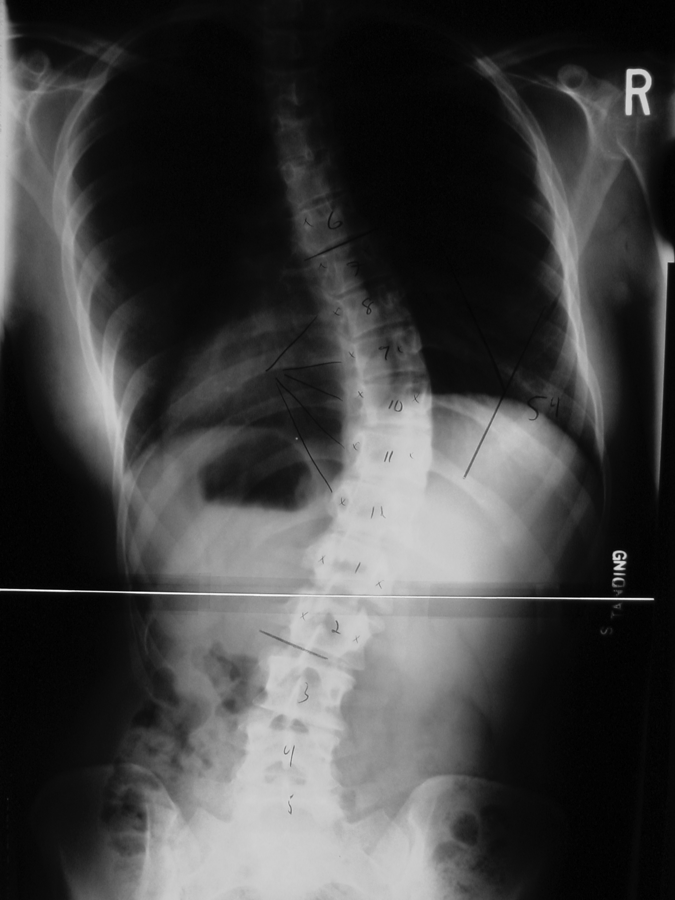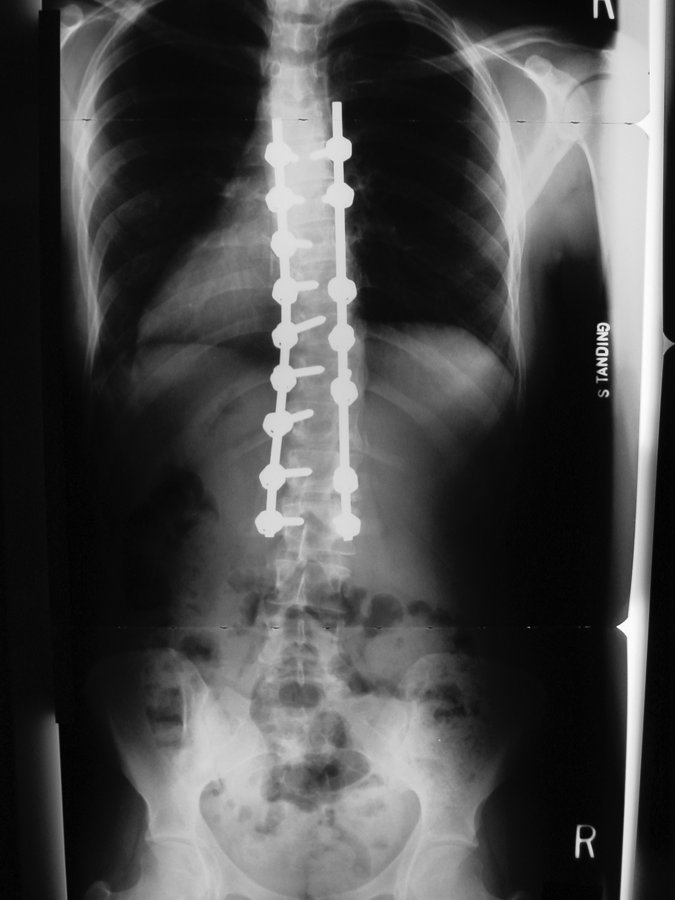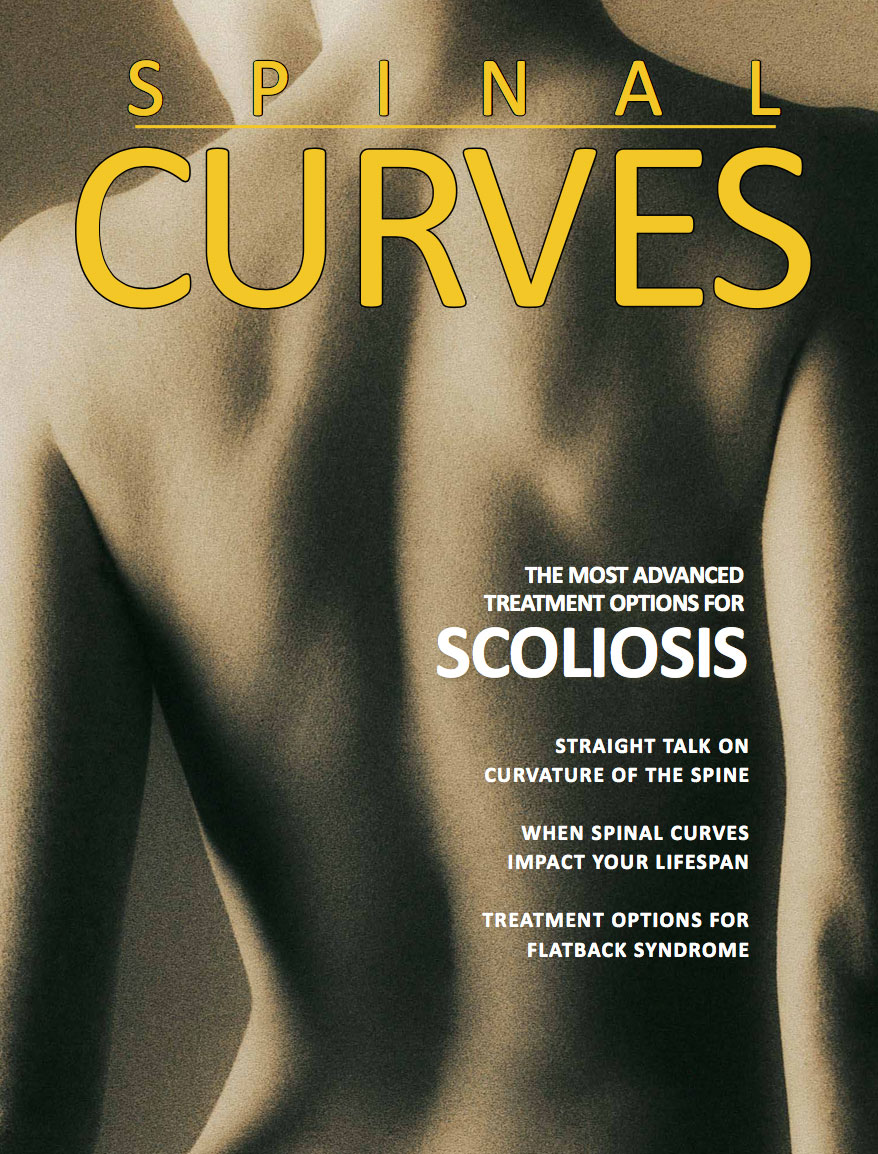 Young adult scoliosis- 56 degree curve
Young adult scoliosis- 56 degree curve
Age at surgery: 22
Years since surgery: 6
 Stacy began developing her spinal curve when she was eight years old. “My dad noticed that my back didn't look normal when I was in the fourth grade” she recalls. “The nurse at my school checked me out and agreed that I probably had scoliosis.”
Stacy began developing her spinal curve when she was eight years old. “My dad noticed that my back didn't look normal when I was in the fourth grade” she recalls. “The nurse at my school checked me out and agreed that I probably had scoliosis.”
Next, Stacy was examined by physicians in Midland and Dallas. Until her junior year of high school she wore a back brace. The non-surgical approach of bracing is used to help improve the alignment of the spine and allow the spine to grow in a straighter, thus keeping the curve from progressing. Unfortunately, the back brace didn't stop progression of Stacy's spinal curve. By age 22, her spinal curve was at 56 degrees and causing severe back pain. The symptoms were so bad that Stacy could not even sit in a recliner.
Realizing that scoliosis care is a specialty unto itself, her husband, Derek, researched the best spine and scoliosis centers on the internet. Dr. Geck came up prominently in his search. Dr. Geck is fellowship trained in adult spine and scoliosis surgery as well as pediatric scoliosis surgery, and he cares for patients with scoliosis throughout their lives. Stacy soon made an appointment to see Dr. Geck.
“My concern in these patients is that Stacy had evidence of progression after skeletal maturity,” says Dr. Geck. “Her curve had progressed to 56 degrees. This, along with the size of her curve and her pain, indicated that she was at risk for further progression and pain with time.”
In a series of counseling visits, Dr. Geck explained to Stacy and Derek that the options included conservative options such as injections and therapy, but that the progression of the curve may continue. He explained that curvatures greater than 40-50 degrees often continue to progress after skeletal maturity. Stacy realized that her condition may continue to worsen without surgery, and her pain would continue. After much thought and consideration, Stacy and her husband decided surgery was the best option for them.
“After surgery, the difference was instant,” Stacy exclaims. “Within the first several days I was up and walking around the hospital.” She even felt ready to get back to her work as a legal assistant within about 6 weeks. The curve in Stacy's spine was improved by more than an 80 percent correction, from 56 degrees to 12 degrees. The use of new spinal instrumentation techniques made this significant correction possible.
After scoliosis surgery, it is important for patients to avoid activity that puts too much stress on the spine until it is healed. Stacy is a runner but she was limited to walking for the first six months. She would walk for up to 2 miles at a time. “Dr. Geck gave me the okay to start running again after six months and I started out with running just a mile.” Within a year, Stacy was back to her normal activity of runs up to four miles at a time, a few days a week. She does boot camp workouts, and is planning on doing a triathlon.
 |
 |
In 2007, Stacy and Derek welcomed a happy and healthy baby girl to their family. Her name is Avery. “Other women would talk of having back pain during pregnancy, this was not a problem for me at all,” Stacy remarks. Today, five years after her surgery, she continues to be pain-free and leads an active career and family life. She is also expecting another baby.
Stacy admits that prior to surgery she was pretty nervous. “I had never had any kind of surgery before this. But Dr. Geck spent 3 different visits explaining to me what scoliosis is, and how it can affect my life. He invited my husband to come along as well for our counseling visit. He even visited the morning of surgery to answer my last minute questions and calm my nerves.”
“I have not been limited in any physical activities since the surgery,” says Stacy. I grew about ½ inch, I have better posture, and I have a full work out schedule. In five years, I plan to be involved with my children and their activities, and I plan to spend as much quality time with my husband as possible. Working is also a huge part of my life.”
As the Co-Chief of a referral center specializing in scoliosis care, Dr. Geck focuses his practice on scoliosis and complex spine surgery. “My favorite days are the clinics with our long term follow up patients like Stacy,” says Dr. Geck. “Seeing how well our patients are doing 2 years, 5 years, or longer after surgery makes our whole team see the value in scoliosis care.”






